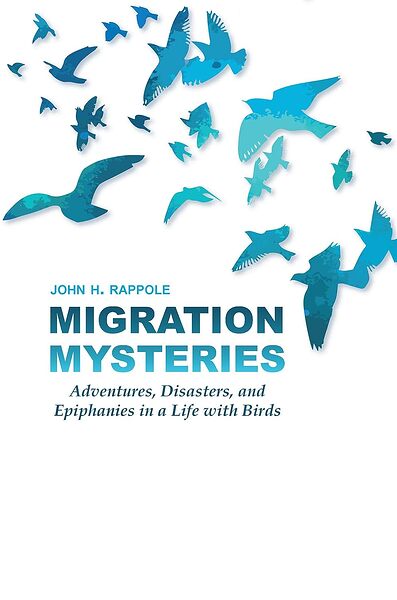Looking for a good read? Here is a recommendation. I have an unusual approach to reviewing books. I review books I feel merit a review. Each review is an opportunity to recommend a book. If I do not think a book is worth reading, I find another book to review. You do not have to agree with everything every author has written (I do not), but the fiction I review is entertaining (and often thought-provoking) and the non-fiction contain ideas worth reading.
Book Review
Questioning Why Birds Migrate
Reviewed by Mark Lardas
April, 28, 2024
“Migration Mysteries: Adventures, Disasters, and Epiphanies in a Life with Birds,” by John H. Rappole, Texas A&M University Press, February, 2024, 400 pages $42.00 (hardcover)
Why do birds migrate? The popular view holds it due to weather; birds leave nesting grounds to avoid winter weather, returning when the weather improves. John Rappole has studied migrating birds for 50 years. He believes birds leave ancestral homes in the tropics to exploit plentiful resources in their northern range.
“Migration Mysteries: Adventures, Disasters, and Epiphanies in a Life with Birds,” by John H. Rappole, explains this conclusion. It also explores Rappole’s career as a research scientist from the 1970s through the present.
“Migration Mysteries” was written for the general public, more approachable than his highly technical and theoretical “Bird Migrations: A New Understanding.” “Migration Mysteries” is as much a memoir as a book about migrating birds. Rappole explains his research that led to his bird migration conclusions, while providing a lively account of his research career.
His career is atypical. He fell in love with field biology during a 1966 study involving birds while a premed student at Colgate. It convinced him to become a field biologist not a doctor. Despite an interruption for military service during Vietnam, and a rocky academic career, he achieved this dream by the 1970s.
Early graduate research involved trips to Mexico, studying the winter grounds of migrating songbirds. This research yielded a remarkably observation. Migrating birds were expected to be transients, flitting through their southern range like tourists. He found indications they established territories, which they defended as firmly as they did their northern nesting areas. They had summer homes and winter homes.
Rappole expanded on that epiphany over his career. His research convinced him that migration allowed birds to exploit unused resources in northern territories. They flew north for the summer, returning home in the winter. Moreover, rather than having fixed ranges, they moved into new territories as climate changed. Migration made them more able to survive change, not less.
His conclusions may irritate both sides of today’s climate debate. He views climate change as a natural phenomenon. Ice ages occurred without human intervention. Simultaneously he deplores the effects of overexploitation of natural environments. Tropical deforestation threatens species extinction, especially migratory birds.
“Migration Mysteries” is delightful on several levels. It is a fascinating and easily grasped book about the role environment plays in nature. It shows how species adapt to change. It is also a fascinating personal account. It provides insights into what a career as a research scientist entails.
Mark Lardas, an engineer, freelance writer, historian, and model-maker, lives in League City. His website is marklardas.com.
